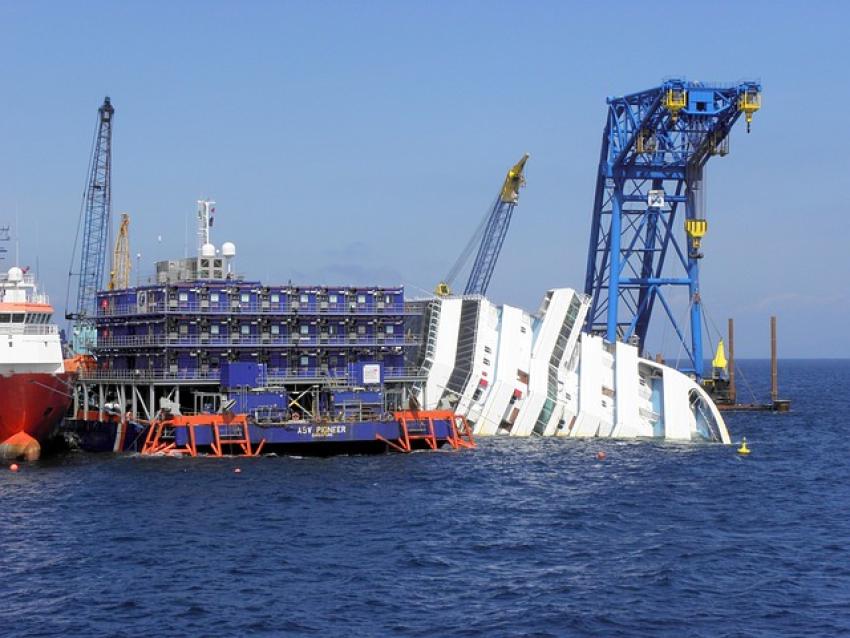
Executive Summary
The Oil Pollution Act of 1990 (OPA 90) created the modern framework for preventing, preparing for, and responding to oil spills in U.S. waters. An OPA service translates those legal requirements into a living operational system—one that is documented, exercised, and ready to activate in minutes. Done well, it reduces incident frequency, compresses response timelines, protects sensitive shorelines, and lowers total cost and liability for shipowners and facility operators.
What an OPA Service Actually Delivers
A mature OPA program is more than a binder. It is an integrated stack of people, plans, equipment, and proof:
Plan Engineering & Maintenance: Vessel Response Plans (VRP), Nontank VRPs (NTVRP), and Facility Response Plans (FRP) aligned with Area Contingency Plans (ACPs) and the National Contingency Plan (NCP).
24/7 Decision Authority: A designated Qualified Individual (QI) empowered to obligate funds and activate resources immediately.
Incident Management Team (IMT): A scalable ICS structure—Operations, Planning, Logistics, Finance/Admin, Public Information—ready to stand up virtually or at an incident command post within minutes.
Pre-Contracted Capability: Verified Oil Spill Removal Organizations (OSROs) and Salvage & Marine Firefighting (SMFF) partners with proven time-to-scene performance, plus wildlife responders, waste vendors, temporary storage, and aerial surveillance.
Exercises & Training: PREP-aligned notifications, table-tops, deployments, and unannounced drills with corrective actions closed.
Documentation & Claims: Standardized ICS records, geospatial mapping, cost capture, and claims support that withstand audits and accelerate reimbursement.
COFR Stewardship: Proactive management of Certificates of Financial Responsibility to avoid port delays.
Building Blocks of Compliance—and Why They Matter
1) Response Plans (VRP / NTVRP / FRP)
OPA 90 requires plans tailored to operating profile and geography. Robust plans quantify worst-case discharge (WCD) volumes; identify sensitive resources; set time-to-scene benchmarks; and define tactics for containment, recovery, temporary storage, and shoreline defense.
Key inclusions:
Call-down lists with escalation logic and redundancies
Staging sites and logistics routes (land, sea, and air)
Booming strategies (primary, secondary, exclusion) and skimmer throughput assumptions
Dispersant/in-situ burn decision trees where authorized, with monitoring plans
Communications and public information protocols
Integration with ACP priorities and state specifics
Plans must be living documents: contacts, equipment inventories, and port conditions drift—your service keeps them synced to reality.
2) QI & IMT Depth
OPA makes speed a legal obligation. The QI triggers activation without waiting for a committee. The IMT scales quickly, embedding with the Federal On-Scene Coordinator to create a unified command. Depth charts, relievers, and multilingual coverage preserve tempo during multi-day operations.
3) OSRO & SMFF Readiness
Pre-contracted OSROs must match your routes (open water, nearshore, fast water, cold weather). SMFF coverage under 33 CFR 155 Subpart I demonstrates capability for emergency towing, dewatering, onboard firefighting, diving/patching, lightering, and subsea fuel removal. A strong OPA service verifies equipment counts, mobilization points, and mutual-aid agreements—before an exercise or incident tests them.
4) COFR & Insurance Alignment
COFR lapses stop port calls. Your OPA partner tracks expirations and handles changes in ownership, flag, or insurer so filings stay clean and compliant.
Training, Exercises, and Proving Performance
Paper doesn’t stop oil—people do. An effective program executes a PREP-aligned cycle:
Notification Drills: Validate 24/7 reachability, activation speed, and escalation paths.
Table-Tops: Stress ICS roles, WCD logic, countermeasure approvals, and public messaging.
Equipment Deployments: Demonstrate booming patterns, skimmer GPM, temporary storage handoffs, and shoreline tactics; surface real-world constraints like ramp access and tides.
Unannounced Exercises: Mirror Coast Guard/EPA practice and reveal true “time to boots and boom.”
After-Action & Corrective Actions: Gap owners, deadlines, and verifiable closure—so findings don’t repeat.
Crew curriculum typically includes initial notifications, responder safety, SCAT (Shoreline Cleanup Assessment Technique), wildlife considerations, decon, and waste segregation.
Protecting Sensitive Resources
OPA 90 prioritizes fisheries, wetlands, cultural sites, and subsistence use. A best-in-class service packages tactical playbooks mapped to ACP segments:
Tiered booming for inlets, marinas, and industrial intakes
Cold-weather/ice tactics (ice-capable boom, heated transfer lines, reduced-daylight ops)
Shoreline protection and cleanup standards by substrate (sand, marsh, rip-rap, cobble)
Wildlife response integration, including hazing, capture, stabilization, and release
Countermeasure decision frameworks where pre-approval exists, with air/water monitoring
Pre-staging boom, pumps, portable power, and storage near risk hotspots compresses the first hour, when containment is most effective and cheapest.
Documentation, Cost Control, and the OSLTF
OPA 90 puts a premium on defensible records. Your service standardizes ICS forms, electronic 214s, timekeeping, equipment logs, drone/overflight imagery, and GIS layers (boom lines, recovery zones, waste volumes). The payoff:
Regulatory confidence and smoother inspections
Faster insurer reimbursement via auditable cost capture
Access to the Oil Spill Liability Trust Fund (OSLTF) where appropriate
Cleaner third-party claims handling for property damage, economic loss, and subsistence impacts
Documentation rigor keeps the response focused on cleanup—not disputes.
Coastal, Inland, and Alaska/Arctic Nuance
OPA readiness must match operating reality:
Coastal/Offshore (USCG-led): Vessel traffic, port closures, offshore recovery, and marine firefighting integration dominate.
Inland (EPA-led): Pipelines, tank farms, flood behavior, road/bridge access limits, and fast-water tactics drive planning.
Alaska & Arctic/Sub-Arctic: Ice, limited daylight, sparse infrastructure, and wildlife sensitivities often require aviation support and sometimes Alternative Planning Criteria (APC). A seasoned provider drafts APCs, secures approvals, and validates annually to prove equal or better protection than standard benchmarks.
Technology That Shortens the Decision Loop
Modern OPA programs operate on a common operating picture (COP) that fuses AIS, tides, winds, radar/satellite weather, UAS feeds, and resource tracking. Live dashboards show:
Boom deployed vs. planned
Skimmer throughput and recovered volumes
Temporary storage status and waste streams
Responder locations and safety checks
Satellite comms preserve ICS continuity when cellular networks fail; drones verify booming effectiveness and map shoreline impact during low light or poor visibility.
What Activation Looks Like (First 24 Hours)
Hour 0–1: Notify & Mobilize
QI triggers plan notifications; OSRO/SMFF assets roll; initial safety message issued. IMT forms virtually; logistics opens a resource ordering line.
Hour 1–6: Stabilize & Contain
Source control (transfer/lightering, cofferdams, hot taps, dewatering); tiered booming; skimmer deployment; temporary storage staged. Initial shoreline reconnaissance and wildlife coordination begin.
Hour 6–12: Scale & Plan
Unified command formalized with FOSC; trajectory modeling; Incident Action Plan (IAP) for next Op Period; staffing ramps; public information cadence set.
Hour 12–24: Sustain & Document
Operational rhythm established (Ops, Planning, Logistics, Finance/Admin). ICS documentation, cost capture, and waste tracking are standardized; claims intake channels open if needed.
Early tempo is everything; the faster these steps occur, the smaller the spill footprint and the lower the total cost.
KPIs to Judge an OPA Service
Measure performance with metrics that matter:
Notification to QI Answer: Target minutes, not hours
Time-to-Scene for First Boom/Skimmer: Benchmarked by port/zone
Percent of Corrective Actions Closed on Time: >95%
Plan Currency: Contacts/equipment <30 days out of date
Exercise Completion: 100% PREP cycle with documented AARs
Documentation Accuracy: <2% administrative rework post-incident
If a provider can’t show these, they’re selling paper, not readiness.
Selecting the Right Partner
Evaluate capability—not just price:
Network Strength: Nationwide OSRO/SMFF coverage with verified mobilization times by zone and mutual-aid depth
24/7 Watch Centers: Redundant lines, multilingual staff, surge staffing for long events
Exercise Pedigree: Unannounced drill performance, corrective action culture, and regulator references
Regulatory Credibility: Positive standing with USCG sectors, EPA regions, states, and trustees
Transparent Billing & Claims Support: Digital, auditable timekeeping and equipment logs
Relevant Case Studies: WCD drills, cold-weather ops, shoreline campaigns, pipeline/terminal incidents
Ask for equipment inventories, mobilization timelines, and references for operations similar to your profile.
The Business Case: Preparedness Pays
Every gallon prevented, every hour shaved off response, and every day saved on port reopening translates to fewer penalties, lower cleanup costs, smaller third-party claims, and preserved reputation. A mature OPA service also stabilizes insurance relationships, simplifies port calls, and protects the license to operate in sensitive regions. In pure financial terms, readiness beats improvisation—every time.
Conclusion
An effective OPA service turns statutory mandates into operational muscle: current plans, a 24/7 QI, a deep IMT bench, vetted OSRO/SMFF contracts, staged gear, disciplined drills, and technology that compresses the decision cycle. When the phone rings, that system activates without hesitation—containing spills faster, protecting shorelines and communities, and controlling total cost and liability. For fleets and facilities trading in U.S. waters, investing in OPA readiness isn’t just compliance; it’s smart risk management that pays dividends on the day you need it most.




